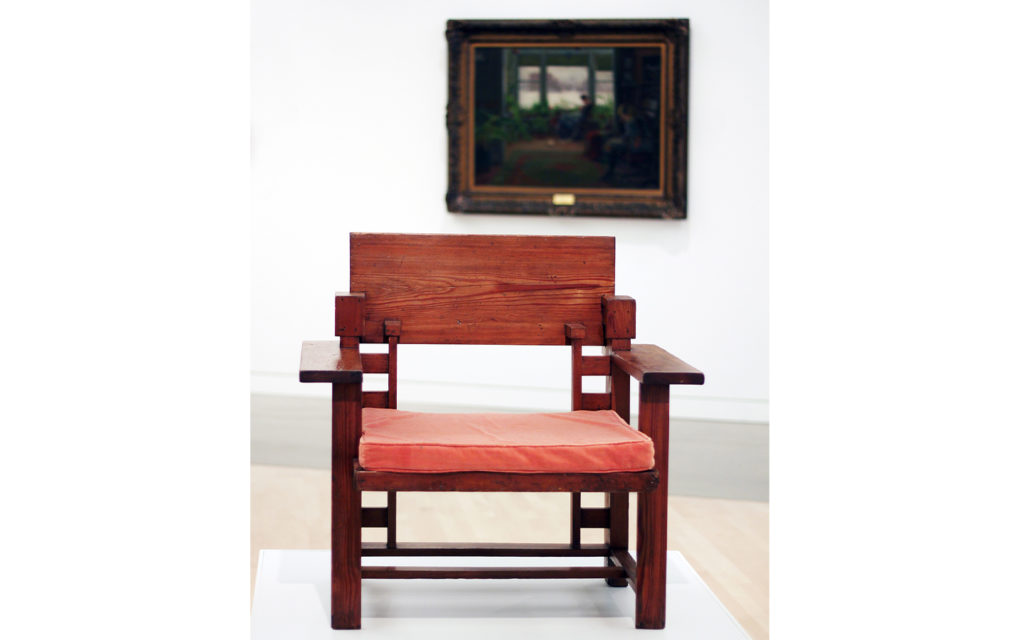What is it?
Artist
Frank Lloyd Wright (Richland Center 1867–1959 Phoenix, Arizona)
Title
Taliesin II Chair
Year
c. 1914
Medium
Cypress with upholstered cushion
Dimensions
30 ¾ x 32 ½ x 25 ½ in.
Credit line
Lent 2013, Frank Lloyd Wright Foundation, Taliesin West, Scottsdale, Arizona
About the Work
About
A giant of American architecture, Frank Lloyd Wright is as well known for his decorative arts—especially furnishings and stained-glass windows—as he is for his stunningly modern, often cantilevered, buildings. Following the lush but fussy and ostentatious excesses of the Victorian Period in England, the Arts and Crafts Movement proclaimed a minimalist, handcrafted simplicity. Wright was deeply influenced by this change in tone and philosophy, and adapted the earlier European and subsequent American manifestations to his own distinctive vision.
A native of rural Wisconsin, after attending the University of Wisconsin–Madison, Wright cut his architectural chops in Chicago, under the tutelage of Adler & Sullivan. Wright is closely identified with residential projects, especially his Prairie Style homes of 1900–1914, the same period in which this chair was made. Wright’s famous estate, Taliesen, is located in his home state of Wisconsin. In 1937, he opened a second studio and school, Taliesen West, in Scottsdale, Arizona.
Wright’s furniture is deeply architectural in spirit: solid designs rooted in planes and interacting with space. This chair offers a generous seating platform, simply but elegantly upholstered in orange velvet. The seat is positioned in space by a geometric interplay of blocky cypress elements. Square and forthright at first glance, the chair contains wonderful subtleties, as small pieces—again just simple squares—push forward, and the whole grid is pierced and opened up so that air, light, and negative space flow through the otherwise stolid form.

